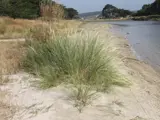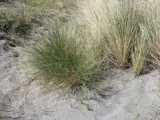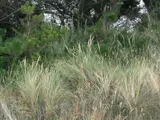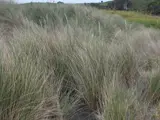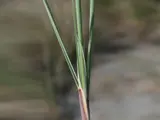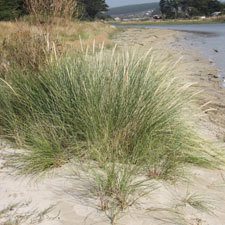 Marram grass
Marram grass
Common name: Marram grass
Botanical name: Ammophila arenaria
Management programme: Advisory
Marram grass is originally from Europe and North Africa and was introduced to New Zealand over 100 years ago for dune stabilisation, property protection and to prepare sand dunes for the planting of conifers. It was recorded as naturalised 1873.
Why is it a pest?
- Changes coastal landscapes, producing large steep faced dunes which are different in shape to those created by native vegetation and prone to erosion.
- Out-competes native grasses such as pingao and spinifex.
Where is it found?
Marram grass is found in coastal areas - particularly sand dunes as it only survives in sandy soils. It spreads form rhizomes which take root when buried and also by seeds scattered by wind and water.
What does it look like?
- Sharply pointed blue-green leaf blades (<1m long) that are tightly rolled.
- Flowers (November to March) are green/yellow.
- Seedhead spikes are long and narrow (up to 30cm) and round.
- One clump can produce 100 new shoots annually.
What are the rules?
Advisory
Council does not enforce the control of advisory species. It is landowner/occupier responsibility to manage these pests.
Council may provide advice on how to manage or control advisory species if required.
How do you get rid of it?
Begin control at the windward end of the infestation where native vegetation is most intact.
- Dig out (small infestations) and dispose of rhizomes at a refuse station or through incineration.
- Spraying
Spray after rain if possible to minimise salt contamination of the herbicide. Follow up required annually until eradicated.
CAUTION: When using any herbicide or pesticide, PLEASE READ THE LABEL THOROUGHLY to ensure that all instructions and directions for the purchase, use and storage of the product, are followed and adhered to.
Read more on pest control advice, information and regulations.
Images

